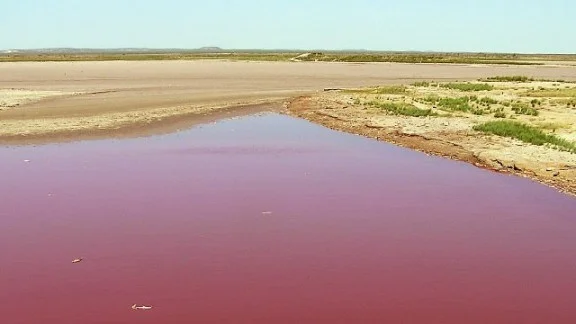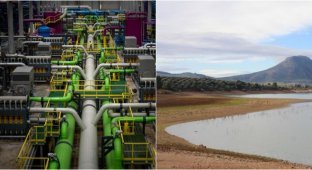Texas phenomenon: the mystery of the red waters of the O.K. reservoir Fisher (7 photos)
The O.K. Fisher Reservoir in Texas attracts attention with its unusual feature - at times the water here acquires a deep red hue, reminiscent of blood. 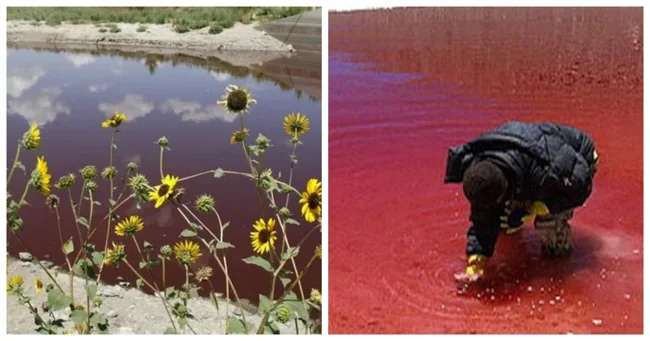
This unique phenomenon is caused by high salt concentrations and the activity of microscopic organisms such as algae and bacteria. Locals and tourists often call it a blood lake, but in fact, this is a natural process that scientists associate with extreme environmental conditions. 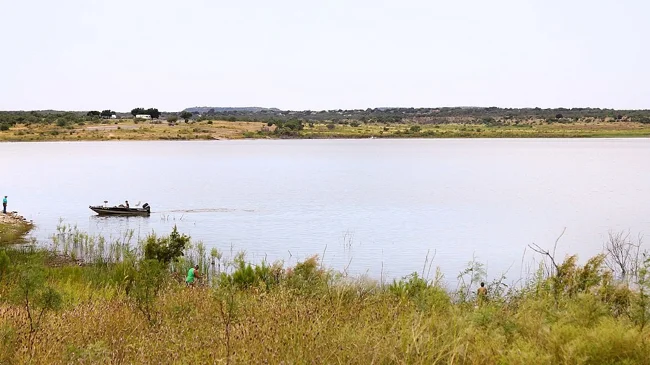
The reservoir in its normal state
The O.C. Fisher Reservoir was created to control flooding and provide additional drinking water for San Angelo and surrounding communities. The lake also serves as a recreational site. 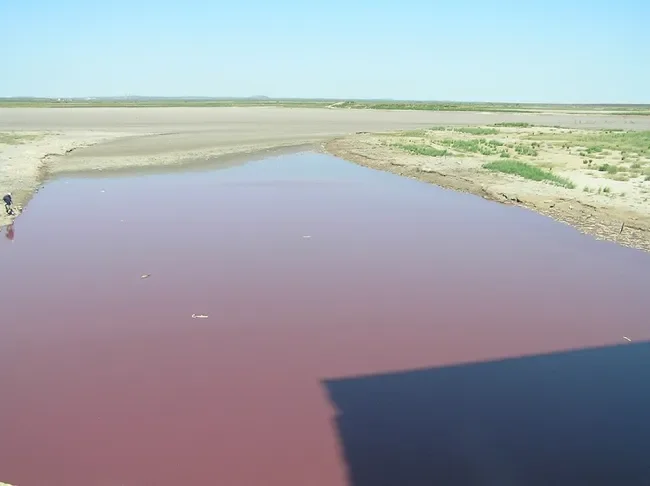
After drying up in 2011
Due to the drought of 2011, it almost completely dried up. And the remaining water turned into a bloody-brown mass. Which gave rise to a lot of rumors about almost biblical prophecies. But in reality, the mystery of the bloody hue turned out to be simpler and more prosaic. The color is explained by the following factors:
Microorganisms and salinity of the water. The red color of the water is caused by the presence of specialized microorganisms such as Dunaliella salina (green algae) and Chromatiaceae bacteria, a genus of purple bacteria that thrive in oxygen-poor water. They are often found in stagnant water. These organisms secrete red pigments that protect them from the intense sunlight typical of the Texas climate.
Seasonal Changes: The intensity of the color varies depending on the time of year, water level, and temperature. In the summer, when the water level drops and the temperature rises, the red hue becomes vivid.
Geological Features: The reservoir is located in an area with mineral-rich rocks. The high concentration of salts and minerals creates a unique environment that promotes the development of these organisms. 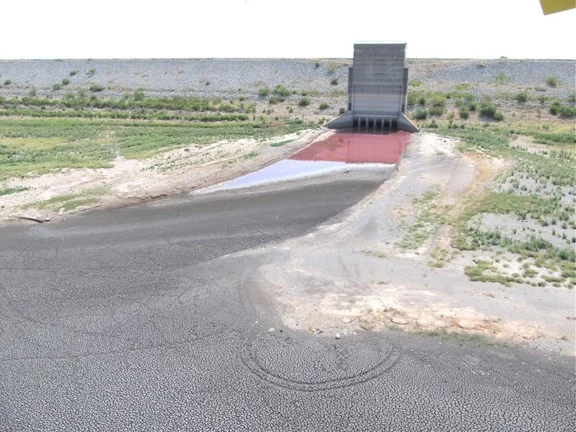
Scientists study the reservoir as a model ecosystem that can exist in extreme conditions. Despite the peculiarities of the water, some species of fish still live in the reservoir, making it a popular fishing spot. 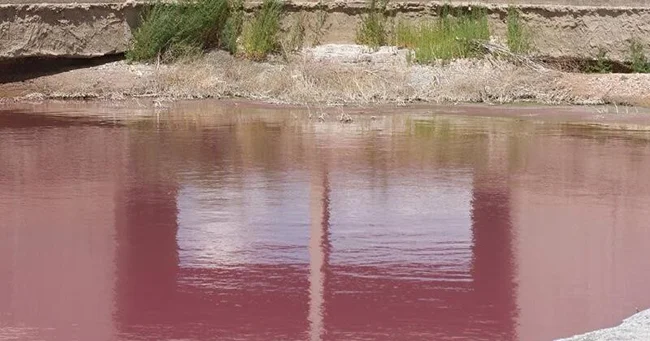
It is often called a natural laboratory, as it demonstrates how life adapts to extreme conditions: after a drought, the fish population in the lake recovered. 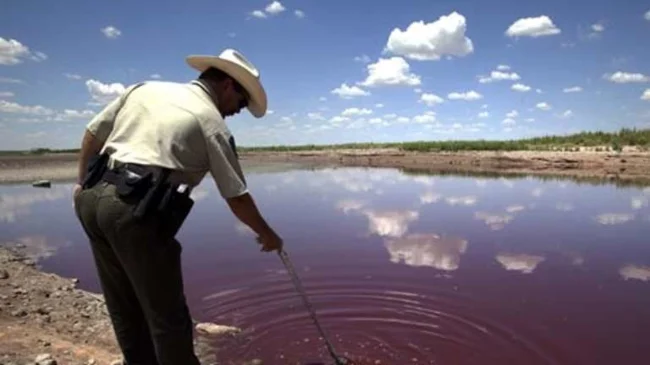
The reservoir supports a diversity of life forms, making it an important object for research. O.K. Fisher Reservoir is a place where science meets the beauty of nature. Its very rare blood color is not the result of a curse, but of the amazing interaction of microorganisms and the environment, making it a unique object for study. 